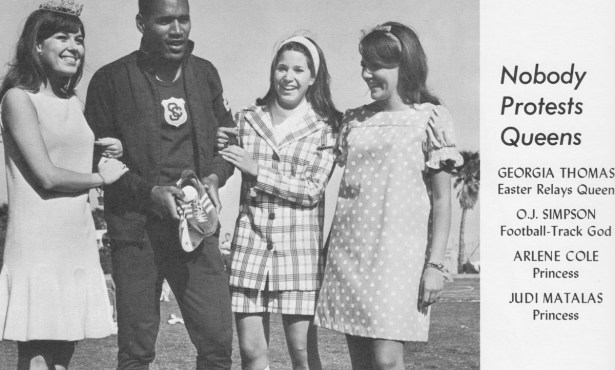Teaching Physics Through Arts
UCSB Lecturer Incorporates Painting and Performing into Physics Classes
Finally, there appears to be an artsy academic alternative for those left-brain types who struggle to maintain an interest in the subject of physics.
Jatila van der Veen, a lecturer in the College of Creative Studies as well as a research associate in the UCSB’s physics department, has come up with a new method of teaching introductory physics that incorporates the arts and caters to those who prefer painting or performing to conducting experiments or solving mathematical equations. Her method is called “Noether Before Newton,” named after Emmy Noether, a German mathematician known for her groundbreaking contributions to abstract algebra and theoretical physics.
Inspired by society’s — and especially women’s — constant fear of physics, van der Veen combined her background in the arts and sciences to form a new method that presents the subject matter in a more engaging fashion.
“One of the problems we face as a country is the appalling lack of math/physics preparation in general,” said van der Veen. “The persistent fear of math and physics among women, I believe, is in large part communicated to young children because their primary school teachers are mostly women, who don’t like math and avoid physical science (they might teach biology a bit in elementary school). This lack of female role models in young children, I feel, contributes to the subliminal thought, in the minds of both girls and boys, that men can do physics and math but women can’t — or those women who can are anomalous.”
Van der Veen said that both men and women have responded similarly to her method of teaching. “I want to state that, although I started out to research why it is still difficult for women in physics, I find that my course is good for both men and women,” she said. “The misconception is that because more men than women enroll in physics, that ‘all’ guys can do physics. This is not the case. There are also plenty of guys who don’t appreciate the way math is taught, and I have found that guys also appreciate the approach I have taken.”
In a recent paper, van der Veen explained her course, Symmetry and Aesthetics in Contemporary Physics, to introduce students to ways of thinking and interpretation that are important for the practice of physics in the 21st century.
“Symmetry and broken symmetry guide our understanding of the laws of physics, from Newton’s classical laws of dynamics to Einstein’s general relativity to modern cosmology, particle physics, string theory, and beyond,” explained van der Veen, “Symmetry and asymmetry are also at the heart of our aesthetic experiences in art, music, and dance.”
Van der Veen encourages the use of dance to explain the symmetries of translation, reflection, and rotation. “Visual art seems to be the most accessible art form for teaching contemporary physics, followed by music … I have had students in my class, for whom dance is their art form, use dance to illustrate symmetry and group theory for their own physics-art projects,” she said.
Van der Veen not only stresses the importance of the arts but suggests that by combining arts and sciences we can partially “rescue” the arts within schools in today’s world of extreme budget cuts. “I believe that participation in the arts has a tremendous potential to both boost students’ self-esteem and sense of self efficacy, as well as provide additional learning pathways to understanding math and science,” she said. “By incorporating arts-based teaching strategies along with math and science, we have the potential to save arts in school as well as improve learning of science by providing ways of visualizing concepts for math and science which are inherent in all art forms.”



